Tag: Gabriele Rausse
Bringing in the Grapes – Part II
Since we don’t have grapes of our own to harvest this year, we did the next best thing, and took a class at Piedmont Virginia Community College on “Harvesting and Basic Analysis of the Must,” taught by the incomparable Gabriele Rausse.
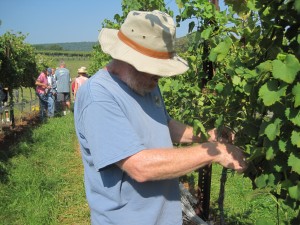
- Each grape is precious – I don’t want to send bad fruit to the crush pad, but I don’t want to waste good fruit either.
After a brief classroom lecture, we moved on to Blenheim Vineyards, where we helped (help being a relative term) pick one section of Viognier grapes. I went into this assuming that picking grapes might be the one thing about viticulture that would be so straightforward, so foolproof – SO SIMPLE! – that we could just do it, without staring at the vines, paralyzed with fear, before asking for help.
Well, no such luck.
For this particular section of the vineyard, Blenheim was “sorting in the vineyard,” which is to say, we were dropping grapes that had succumbed to disease or sour rot, or were otherwise not suitable for pressing. Most often, you bring the grapes in and sort at the crushpad, separating out the fruit that doesn’t belong in the must, and getting rid of MOG – matter other than grapes. (You’d be surprised at how many spiders make their way to the crushpad. )
This has been an exceptionally difficult year for Virginia vineyards, and Blenheim didn’t want to take a chance on letting bad fruit infect the good back at the winery. So, in addition to sorting at the crushpad, Blenheim left bad fruit on the ground in the vineyard. Continue Reading–>
Introducing the Vines, Part II – Meet the Nelsons
It’s long past time to introduce the Nelson County vines, but before I start, let me once again acknowledge that it’s a bit of a stretch to refer to seven vines as a vineyard. But hey, it’s a stretch I’m willing to make. One is a vine, two or more is a vineyard, right?
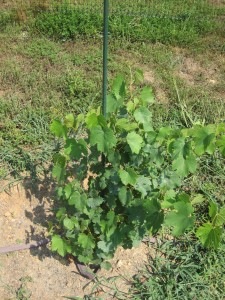
- “Nelson Mandela,” the tallest, noblest of our Cab Franc vines, named for one of the truly great figures of the 20th century.
The Nelson County property is the site for the real vineyard we plan to put in, and the seven vines we’ve planted fall into the category of experimental. As my wife, the Vineyard Goddess, puts it, we want to make our mistakes on these vines, so that we’ll know what we’re doing when we plant the main vineyard.
The vineyard itself is a small plot, surrounded by a deer fence, with five Cab Franc vines and two Mammolo Toscanos. The Cab Franc were purchased from Double A Vineyards, a nursery in New York state. They were ordered for delivery in the middle of April, a bit late in the season, but it took me a little time to get my arms around the idea that I could actually get everything done in time to plant vines this year. We ordered 12 in all, and the other seven were planted at our Fairfax property, where I thought I could keep a close eye on them. Continue Reading–>
Studying Viticulture at Monticello
It’s hard to imagine a better venue for the study of viticulture than Monticello, the home of America’s first great connoisseur of wine, and so I counted myself fortunate that this weekend’s class on vineyard diseases was taught on the small mountain that was Jefferson’s home.
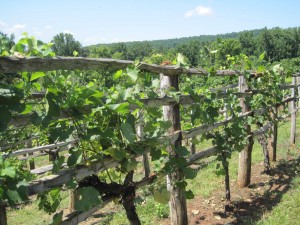
The vineyard at Monticello - just as Jefferson hoped it would be. Note the ancient trellising system.
I’m sure someone will question my description of Jefferson as the nation’s first great wine connoisseur, preferring another term in its place, but I think my words cover the subject better than any others. Jefferson is sometimes called America’s first great viticulturist, and the notebooks he kept while touring the world’s great wine regions reflect an extraordinary knowledge of the subject. Sadly, though, he was never successful in growing wine grapes at Monticello. But he loved wine – that too comes across in his notebooks – and he devoted huge sums of money, as well as significant amounts of his time, toward procuring and enjoying wine (more on this subject in a future post), and so it seems most accurate to think of him as not just a lover of wine, but as the young nation’s foremost authority on the subject. A connoisseur, and yes, much more than that.
Of course, Jefferson was an authority on many things, which is another reason why it seemed so special to be part of a class at Monticello. There are few people today, indeed, few people in history, whose expertise ranged over so many subjects. When you
consider how many hours that men of his age spent on the things we devote minutes or hours to – letters and travel, among them – it is nothing short of astonishing that Jefferson accomplished so much.
And for those of us (hopefully all of us) who care about the freedoms inscribed in the First Amendment, Jefferson is a name to be revered. While Madison may be the author of the First Amendment, Jefferson’s influence was vital. Free speech, free press, and the separation of church and state were central concerns for him. The Cavalier Daily, the student newspaper of the University of Virginia, where I worked for two years while occasionally attending classes, cited Jefferson proudly and perhaps defiantly in its masthead: “For here we are not afraid to follow truth wherever it may lead, not to tolerate any error, so long as reason is left free to combat it.” I always thought that quote was the most elegant and eloquent summation of the argument for a free press that I have ever heard.
Back to the class. It was taught by Gabriele Rausse, Monticello’s assistant director of gardens and grounds and the father of Virginia’s wine industry. Gabriele arrived in the United States in 1976 from his native Italy, thinking he needed to learn a bit more English before returning to the wine country of Australia, one of several wine regions he apprenticed in. At that time, the prevailing wisdom was that Vitis Vinifera, the great wine grapes of Europe, could not be grown in Virginia. Gabriele decided to contest the prevailing wisdom, even though, as he told us on Saturday, everyone thought he was crazy.
But of course, he was right.
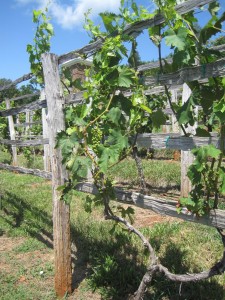
- Mammolo Toscanas at Monticello – and, yes, now you know where we got our Mammolos and why they are so important to us.
Today, Gabriele is the state’s best known vineyard consultant, and the wines he makes himself are elegant in the best traditions of Europe and, yes, Virginia. More on Gabriele in a future post, but for now, let me just say, that if you are lucky enough to taste his wines at a Virginia wine show, you should buy some, as it may be the only chance you get. His winery produces no more than 1,300 cases a year, so they are not only treasures, but they are rare.
Monticello and Gabriele. Life doesn’t get much better. I’ll post something in a few days about the class itself, but for now, I’ll just say that for those of us involved in the Virginia wine industry, even amateurs like me, the spirit of Jefferson will always be an inspiration.
Coming up next weekend: the North American Wineblogger’s Conference in Charlottesville. It says a lot about how far the Virginia wine industry has come that this conference is being held in Charlottesville, in the center of the Monticello AVA. And one of the events I am looking forward to most is the wine tasting at Monticello. It’s not like I’ve never been to a wine tasting, but the very idea of tasting wine at the home of Jefferson is humbling, to say the least.
I’m sure Jefferson will be watching over us, and wishing for just a sip of a true Virginia wine.

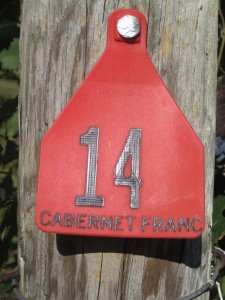

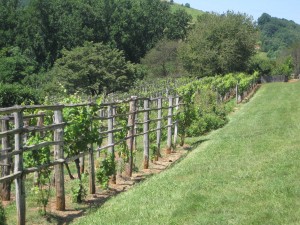


Recent Comments